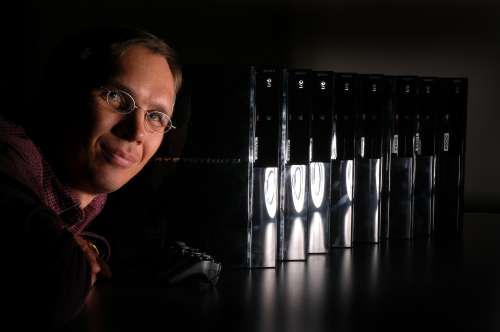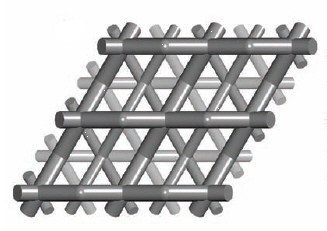“Substantial and urgent changes” are required at the Science and Technology Facilities Council (STFC) — the UK’s main funding body for physics and astronomy — following its handling of an £80m budget shortfall, according to a damning report released today by a 14-strong committee of MPs.
The report claims that poor leadership and “lamentable” decision-making have damaged the UK’s international scientific reputation and exposed serious deficiencies within STFC’s senior management, with chief executive Keith Mason coming in for particular criticism.
It says that Mason’s explanation for axing support for solar-terrestrial physics as a result of the budget shortfall is “inaccurate, unconvincing and unacceptable”. The MPs also question his ability to retain the confidence of the scientific community as well as to carry through the substantial changes required to give the STFC “the leadership it desperately needs”.
Expressing dismay that STFC has been attempting to play down the effects of the cuts on the grounds that reductions in future grants are not problematic, the report calls for the council to postpone any cuts until the government-appointed “Wakeham review” of physics is published in September.
It is very rare and rather sad that an individual or organization comes under such strong criticism Phil Willis MP
“It is very rare and rather sad that an individual or organization comes under such strong criticism in a report like this,” committee chairman Phil Willis MP told physicsworld.com. “So serious is the damage that appears to have been done to STFC that committee members took nearly four hours to agree on the wording.”
Mason, who declined to be interviewed, released the following statement: “I intend for STFC to look forward, though we will take account of some areas where we could have done better. I would hope that the difficulties will not overshadow the considerable advances and successes that we have achieved during our first 12 months.”
Failures on all sides
The 55-page report, published by the Innovation, Universities, Science and Skills committee of the House of Commons, is based on evidence provided by STFC bosses, civil servants and physicists at three hearings earlier this year.
The report is also critical of the government for its role in creating the funding shortfall. It claims that the Department for Innovation, Universities and Skills (DIUS) “should have known” of the £80m black hole when STFC was created in April 2007 by merging the Particle Physics and Astronomy Research Council (which awarded research grants) with the CCLRC, which built scientific facilities.
The merger meant that STFC would inherit the future operating costs of the ISIS neutron source and the brand new Diamond synchrotron at the Rutherford Lab in Oxfordshire, which amounted to £25m per annum that the former CCLRC did not have.
As well as call upon the government to honour its original commitment to leave “no legacy funding issues” from the merger, the report states that the formation of STFC was “untimely and poorly conceived”, given its proximity to the last autumn’s Comprehensive Spending Review (CSR), which set the UK’s science budget for the period 2008-11.
Full economic cost
Although the MPs welcome the 17.5% rise in the overall science budget in the CSR, they point out that the increase does not fully cover the requirement of research councils to pay a much bigger fraction of the “full economic cost” of research projects. Given that large parts of the budget are also tied to “cross council” programmes that largely follow a government agenda, the MPs are concerned that the government has failed to protect the research base and that it might be tinkering too much in decisions best left to scientists — violating the cherished “Haldane” principle.
I intend for STFC to look forward, though we will take account of some areas where we could have done betterKeith Mason, STFC chief executive
The STFC-funded Daresbury laboratory in Cheshire is a case in point. While the government wants to develop the site into a world-leading “science and innovation campus” by teaming up with the private sector, the funding cuts — which will see 80 staff lose their jobs this year alone — could leave it without a major accelerator facility capable of generating the necessary scientific critical mass. “This report is calling for a fundamental reform not only in STFC but in terms of its relationship with government,” says Willis.
But weaknesses in STFC’s peer-review system, communications and management have only exacerbated the funding shortfall, the report claims. Initial STFC programmes to be axed in December when the £80m hole appeared were UK participation in the International Linear Collider (ILC) and the Gemini observatory plus all ground-based solar terrestrial physics research.
According to the report, the fact that these decisions were made with little or no consultation cost the STFC the trust of the scientific community, and the way the ILC and Gemini decisions have played out make the UK look like an “unreliable” and “incompetent” international partner, respectively.
All 100 or so STFC programmes have since been ranked to help target the cuts and, following strong opposition by many particle physicists and astonomers, this ranking is currently under review with final cuts due to be announced in July. The MP’s report expresses “grave” concerns about the effect of such cuts on renowned institutions such as Jodrell Bank, and states that the decision to de-prioritize two of the smaller (ALICE and LHCb) experiments at the Large Hadron Collider at CERN — where the UK has been a major and hitherto consistent partner — just as they are about to deliver results is a cause of “consternation and embarrassment”. It is this “lower priority” category in which Daresbury’s accelerator and laser-science project ALICE finds itself.
Management shortcomings
Not confident that STFC’s problems can be solved by rearranging the responsibilities of existing staff, the MP’s report recommends that the council urgently appoints a permanent communications director.
Peter Main of the Institute of Physics, who gave evidence in the first select committee hearing, welcomes the more consultative approach recently adopted by STFC and is also pleased that the report has supported the Institute’s call for a moratorium on cuts. “It is now up to DIUS to clarify whether the Wakeham review will address the issues affecting STFC, and for DIUS and STFC to agree arrangements which will allow substantive changes to be delayed,” he says.
But Main points to a significant omission in the report: the fact that funding for particle physics and astronomy is exposed to short-term international currency fluctuations. “This has compounded the funding issues for STFC because a significant proportion of their money is tied up in international partnerships,” he says. Indeed, with the UK’s annual subscription to CERN taking up the bulk of these costs, and the pound declining in value against the Swiss Franc, it seems STFC could face another black-hole in its budget before the year is out.



